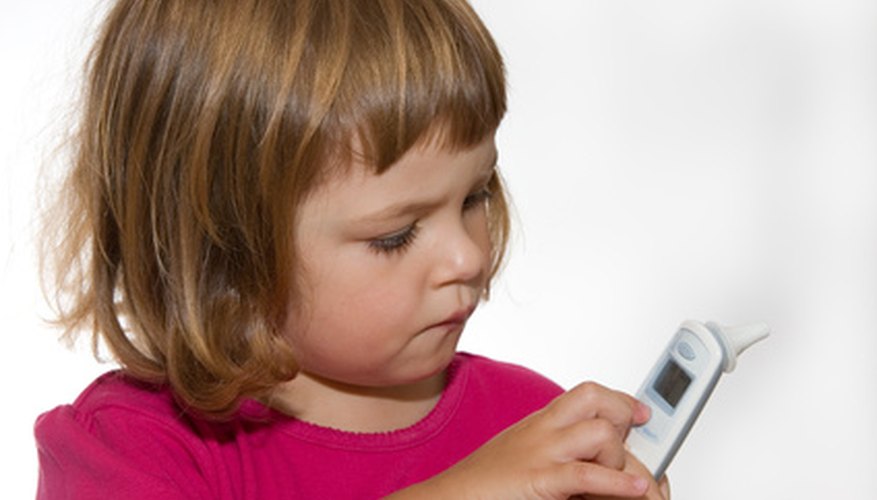More than 95 per cent of non-vaccinated Americans will contract chickenpox before they reach adulthood. In most cases this occurs before the age of 10, and can be a painful experience for the child and a frustrating one for the parents. The Web is full of sites and blogs with ways to soothe chickenpox. One of those methods utilises something you probably already have around the house--baby oil.
Chickenpox Virus
Chickenpox is a highly contagious condition caused by the varicella-zoster virus. Patients with chickenpox usually show flu-like symptoms, a fever and a body-covering rash. The rash, which usually shows up 1-2 days after a fever, a sore throat, or no symptoms at all, produces red spots that form a puss-filled pimple. The pimples eventually burst, dry out and crust over. The "life" of a chicken pock lasts only a couple of days, but the virus unfortunately causes new pocks to appear every day for up to a week. Obviously, this time period is extremely uncomfortable for the chickenpox patient, who, usually being young, cannot always withstand the urge to scratch the itching rash.
- Chickenpox is a highly contagious condition caused by the varicella-zoster virus.
- The "life" of a chicken pock lasts only a couple of days, but the virus unfortunately causes new pocks to appear every day for up to a week.
Scratching Chickenpox
Most chickenpox patients are constantly reprimanded and told "Don't scratch!" However, a child might not understand the consequences of scratching a chickenpox rash. Scratching chickenpox can not only tear the skin and cause unsightly scarring, but it can also open the skin to further infection. Open wounds caused by scratching can let germs into the skin that fester and infect. If one specific area of the skin become red, warm and swollen, a doctor should be notified.
- Most chickenpox patients are constantly reprimanded and told "Don't scratch!"
- Scratching chickenpox can not only tear the skin and cause unsightly scarring, but it can also open the skin to further infection.
Baby Oil: Itch Remedy
Obviously, scratching chickenpox is a no-no. Fortunately, there are several at-home remedies that can soothe the itch caused by chickenpox.
Baby oil has long been known for its soothing effect on the skin. And, because of its mild composition, it is gentle enough to be used on infants (thus the name). Baby oil, in conjunction with cornstarch, can be a great way to treat localised itching or severe spots of rash. By mixing baby oil and cornstarch into a paste form, you can "paint" a soothing mask directly onto the skin.
- Obviously, scratching chickenpox is a no-no.
- Baby oil, in conjunction with cornstarch, can be a great way to treat localised itching or severe spots of rash.
Baby Oil in Baths
Baths are a great way to soothe itchy skin during a chickenpox outbreak. Adding a bit of baby oil into the water can help neutralise and relieve the itch. Other bath additives could be oatmeal, known for its soothing properties, milk of magnesia, or even cheerios ground into a powder. After soaking in the tub, baby oil can be used again on the skin, either alone or combined with cornstarch.
- Baths are a great way to soothe itchy skin during a chickenpox outbreak.
- After soaking in the tub, baby oil can be used again on the skin, either alone or combined with cornstarch.
Avoiding it Altogether
Prior generations suffered through chickenpox without much choice, however, chickenpox vaccines now make the virus an obsolete problem for some. Ask your doctor about a chickenpox vaccine for your children, and avoid the itching, scratching and crying those little red dots inevitably bring.
